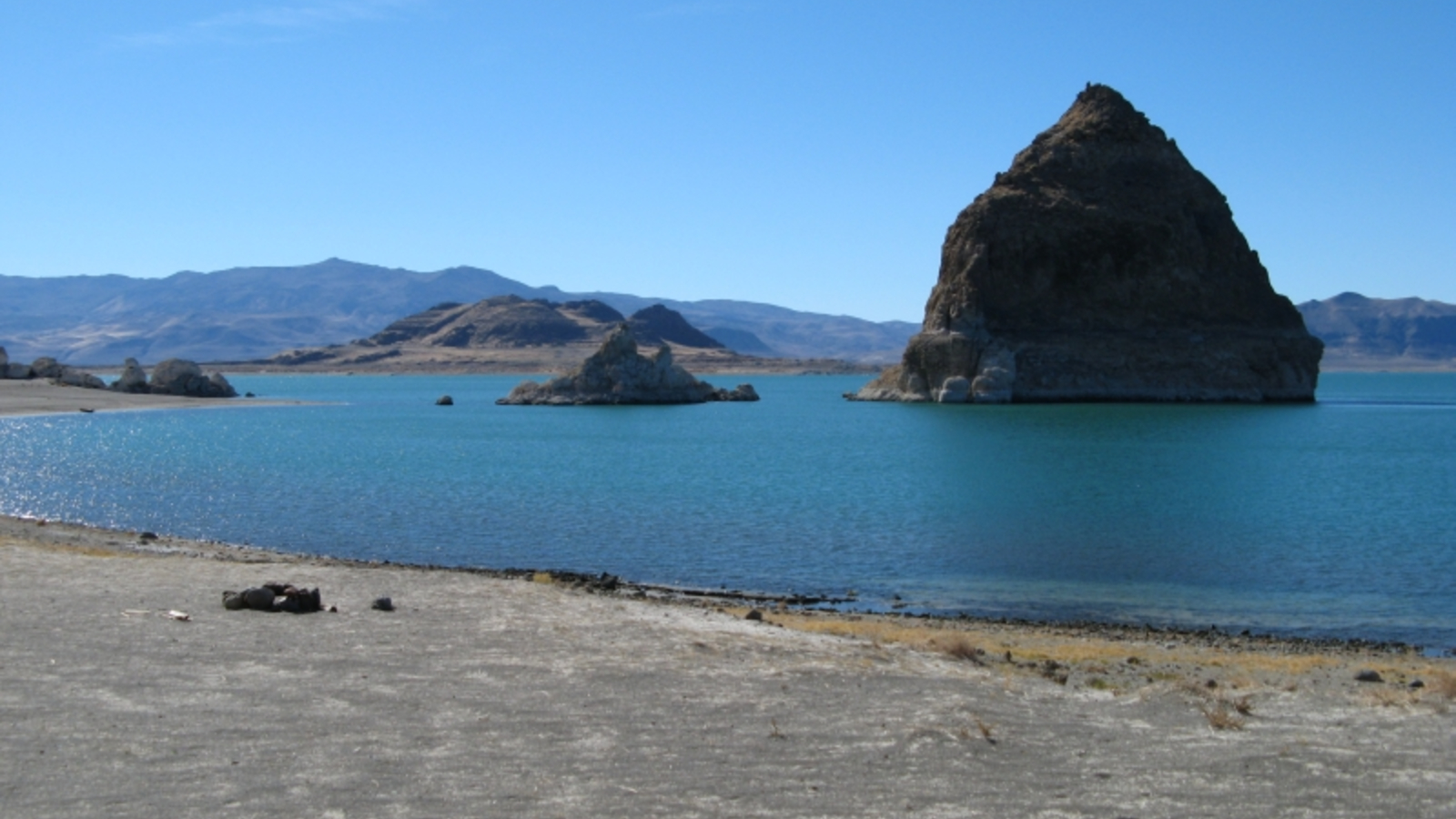Extreme bloom of toxic algae swirls in Nevada's 'Pyramid Lake' — Earth from space
A 2024 satellite photo shows an unusually active bloom of toxic cyanobacteria swirling in the water of Nevada's Pyramid Lake. Research suggests that the algae has been blooming there for at least 9,000 years.

Where is it? Pyramid Lake, Nevada [40.063141310, -119.561560320]
What's in the photo? A massive bloom of toxic cyanobacteria swirling in the lake
Which satellite took the photo? Landsat 9
When was it taken? Oct. 8, 2024
This striking satellite photo shows an exceptionally dense and toxic algal bloom swirling in the waters of Nevada's Pyramid Lake. Some experts believe that the algae has existed in the lake for at least 9,000 years.
Pyramid Lake is a roughly 175-square-mile (453 square kilometers) lake, located northeast of Reno. It is around 27 miles (43 kilometers) across at its widest point and is named after a large pyramid-like rock formation located on a small island in the lake's southern half.
The lake is fed by a single river, but it is endorheic, meaning it has no outflow. As a result, it has a much higher salinity than most lakes, because excess water evaporates away, leaving its dissolved salts behind. The lake is also slightly alkaline and has a pH of around 9, which is roughly equivalent to baking soda.
Pyramid Lake experiences annual algal blooms between September and October, due to warmer temperatures and increased nutrient availability. The predominant algal species is Nodularia spumigena, which is a blue-green, nitrogen-fixing cyanobacteria that thrives in high-salinity waters, according to NASA's Earth Observatory.
But 2024's bloom, captured in this satellite image, was one of the most extreme in recent memory. It peaked on Oct. 15, around a week after this photo was taken. It is currently unclear why this bloom was so intense.
Related: See all the best images of Earth from space

N. spumigena has the potential to produce toxins, such as nodularin, which can affect the liver and cause other adverse health effects in humans and other animals. During the 2024 bloom, local authorities warned people to not let their pets anywhere near the water.
Get the world’s most fascinating discoveries delivered straight to your inbox.
Pyramid Lake was once part of a much larger, prehistoric body of water, known as Lake Lahontan, which covered an area of around 8,000 square miles (21,000 square km) — around 45 times larger than Pyramid Lake.
This ancient lake was hit by climate change at the end of the last ice age, or Pleistocene epoch, which ended around 12,000 years ago. Around 3,000 years later, Lahontan had essentially disappeared, leaving Pyramid Lake as its largest remaining remnant.
Today, Pyramid Lake is known for a series of striking pillar-like calcium carbonate features, known as tufas, which grew from Lake Lahontan's receding waters between 26,000 and 13,000 years ago, according to the U.S. Geological Survey. (This includes the pyramid-like structure the lake is named after.)
A 1990 study analyzed trends across 15 consecutive N. spumigena blooms in Pyramid Lake between 1972 and 1986. The researchers theorized that the cyanobacteria once bloomed in Lake Lahontan and may have persisted in its remaining waters ever since.
Pyramid Lake is also home to the cui-ui (Chasmistes cujus) — an endangered species of suckerfish that isn't found anywhere else on Earth. These fish feed mainly on algae, such as N. spumigena, and also likely used to dwell within Lake Lahontan.

Harry is a U.K.-based senior staff writer at Live Science. He studied marine biology at the University of Exeter before training to become a journalist. He covers a wide range of topics including space exploration, planetary science, space weather, climate change, animal behavior and paleontology. His recent work on the solar maximum won "best space submission" at the 2024 Aerospace Media Awards and was shortlisted in the "top scoop" category at the NCTJ Awards for Excellence in 2023. He also writes Live Science's weekly Earth from space series.
You must confirm your public display name before commenting
Please logout and then login again, you will then be prompted to enter your display name.
